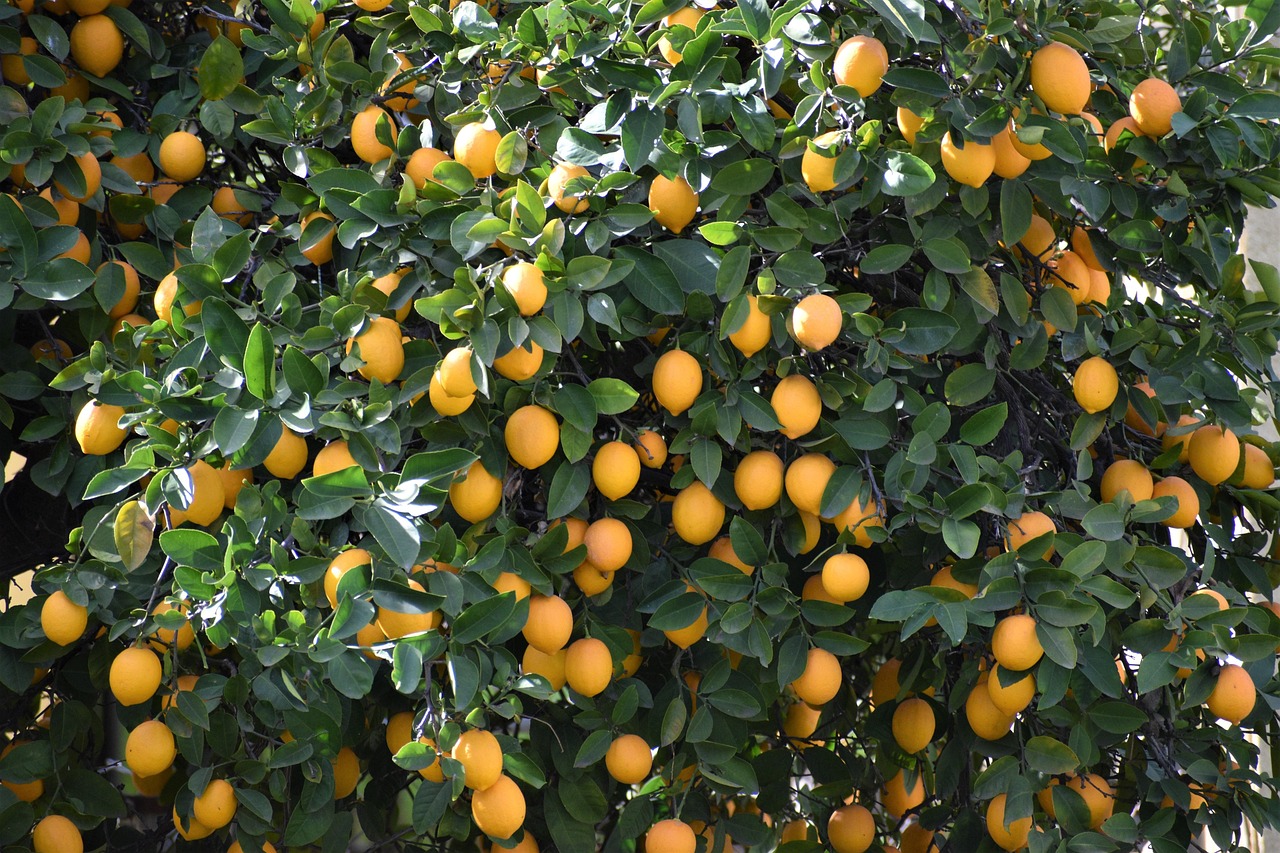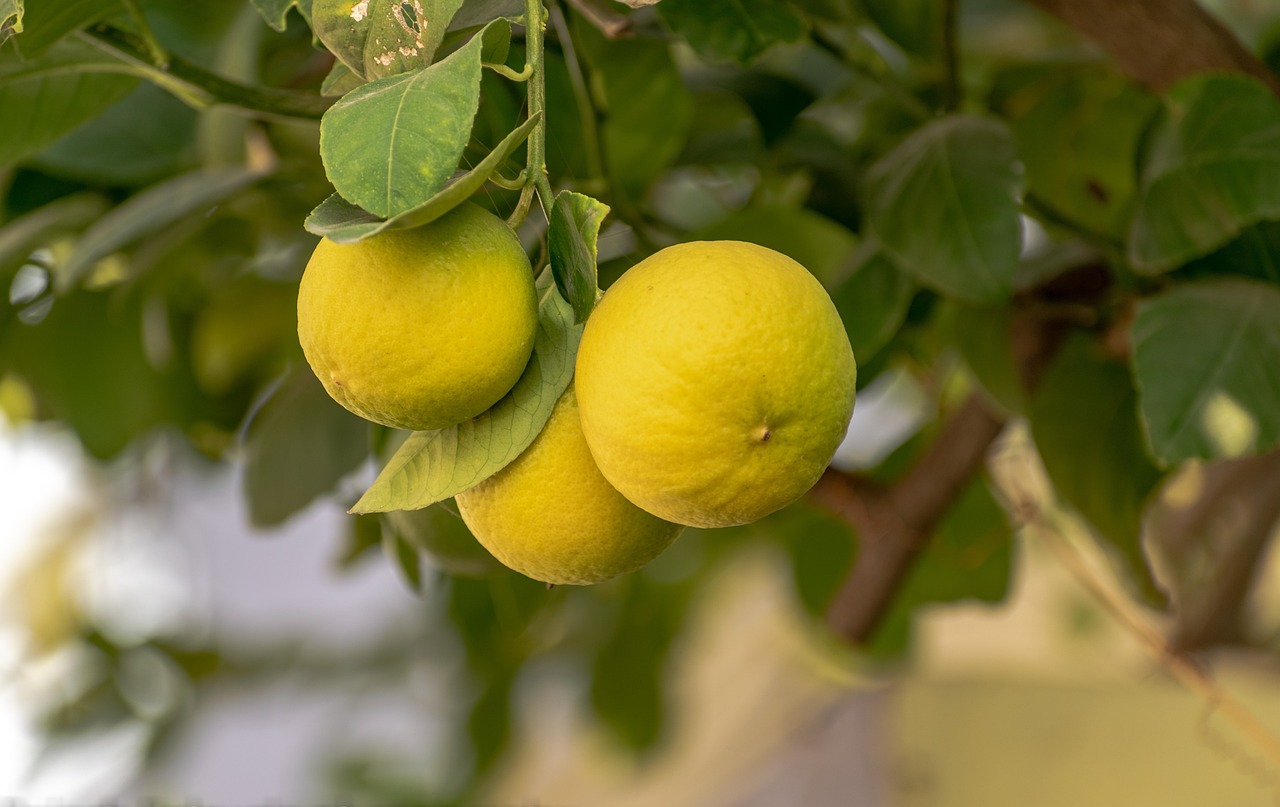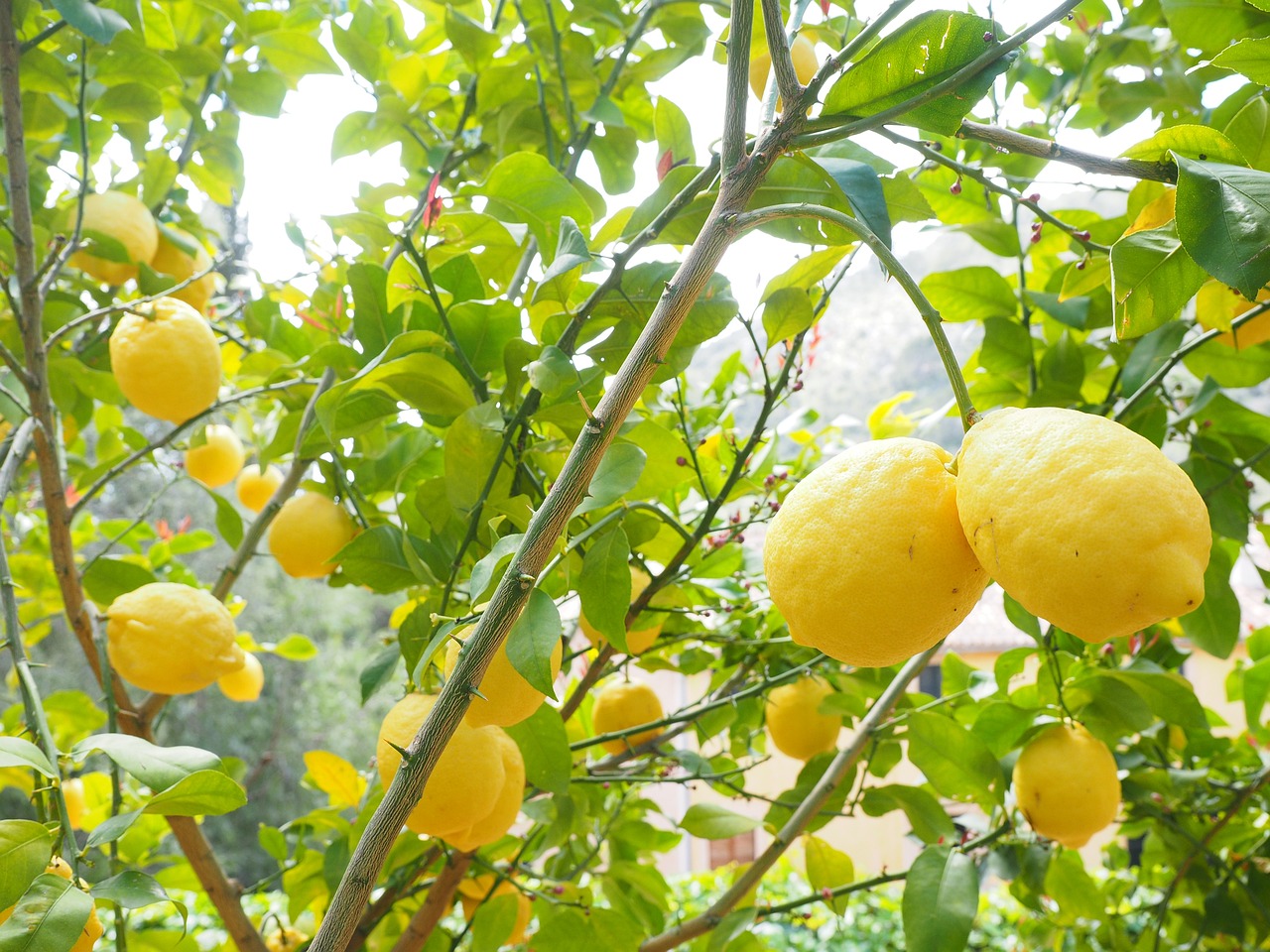Lemon trees typically grow at a rate of about 1 to 2 feet per year when planted outdoors. Indoor lemon trees may grow slower, around 6 to 12 inches annually, due to limited light and space.
Lemon Trees: An Overview
Lemon trees are beloved for their vibrant fruit and fragrant blossoms. They belong to the citrus family and are known for their adaptability. Whether grown indoors or outdoors, understanding their growth rate is essential for successful cultivation. Many gardeners enjoy the idea of having a lemon tree at home. They provide fresh lemons for cooking and beverages, adding both beauty and function to any space.

The growth rate of lemon trees can vary significantly based on several factors. These include the specific variety, growing conditions, and care provided. Generally, outdoor lemon trees tend to flourish more rapidly than their indoor counterparts due to better access to sunlight and natural soil nutrients.
Factors Influencing Growth Rate
Understanding what affects the growth rate of lemon trees helps gardeners make informed decisions. Here are some key factors:
- Light: Lemon trees require plenty of sunlight. Ideally, they need at least 8 hours of direct sunlight daily. Indoor trees may struggle in low-light conditions.
- Soil Quality: Well-draining soil rich in organic matter promotes healthy growth. Poor soil can stunt development.
- Watering: Consistent watering is crucial. However, overwatering can lead to root rot, while underwatering can cause stress.
- Temperature: Lemon trees thrive in warm temperatures. They prefer a climate between 70°F and 85°F during the day.
- Fertilization: Regular feeding with a balanced fertilizer supports growth. A lack of nutrients can slow down the growth rate.
Growth Rate Comparison: Indoor vs. Outdoor
The difference in growth rates between indoor and outdoor lemon trees can be significant. To illustrate this, here is a comparison:

| Growth Aspect | Indoor Lemon Trees | Outdoor Lemon Trees |
|---|---|---|
| Average Growth Rate | 6 to 12 inches per year | 1 to 2 feet per year |
| Light Requirements | 8 hours of direct sunlight (may need grow lights) | Full sun (natural sunlight) |
| Soil Type | Potting mix with good drainage | Well-draining garden soil |
| Watering Needs | Moderate (allow topsoil to dry between waterings) | Consistent (keep soil evenly moist) |
| Temperature Range | 70°F to 80°F (ideal) | 65°F to 85°F (preferably warm) |
As shown in the table, outdoor lemon trees benefit from natural conditions that promote faster growth. Conversely, indoor trees face challenges such as limited light and space, which can hinder their development.
Lemon Tree Varieties
Different varieties of lemon trees also influence growth rates. Some popular types include:
- Eureka: This variety produces fruit year-round and has a vigorous growth habit.
- Lisbon: Similar to Eureka but tends to be more heat-tolerant.
- Meyer: A cross between a lemon and a mandarin, it grows smaller and is ideal for indoor cultivation.
The choice of variety can impact how quickly a lemon tree reaches maturity and begins producing fruit. Beginners may want to start with more forgiving varieties like Meyer lemons for indoor planting.

Caring for lemon trees involves understanding these factors and adjusting conditions as needed. Proper care can maximize growth potential, leading to a fruitful harvest in both indoor and outdoor settings.
Soil Requirements for Lemon Trees
The soil in which lemon trees are planted plays a significant role in their growth and overall health. Proper soil conditions can enhance growth rates for both indoor and outdoor lemon trees. Here’s what you need to know about soil requirements:
Soil Composition
Lemon trees thrive in well-draining soil that retains some moisture but does not become waterlogged. The ideal soil composition includes:
- Sandy Loam: A mix of sand, silt, and clay provides excellent drainage.
- Organic Matter: Adding compost or well-rotted manure improves soil fertility and structure.
- pH Level: Lemon trees prefer slightly acidic to neutral soil with a pH of 5.5 to 6.5.
Improving Drainage
For indoor lemon trees, ensuring proper drainage is critical. Here are some tips:

- Use Pots with Drainage Holes: Always choose containers that allow excess water to escape.
- Add Perlite or Sand: Mixing perlite or coarse sand into potting soil enhances drainage capabilities.
- Avoid Overwatering: Water only when the top inch of soil feels dry to the touch.
Watering Practices
Water management is essential in promoting healthy growth for lemon trees. The right amount of water encourages root development while preventing diseases such as root rot.
Watering Frequency
The frequency of watering depends on several factors, including the tree’s age, size, and environmental conditions. Here are some general guidelines:
- Young Trees: Water every 5 to 7 days during the growing season.
- Mature Trees: Water every 10 to 14 days, allowing the topsoil to dry between waterings.
- During Hot Weather: Increase watering frequency as needed to combat heat stress.
Signs of Overwatering and Underwatering
Recognizing the signs of improper watering can prevent serious issues. Here are symptoms to watch for:
- Overwatering:
- Yellowing leaves
- Soggy soil
- Mushy roots (if inspected)
- Underwatering:
- Curling or browning leaf edges
- Dry, cracked soil
- Wilting foliage
Fertilization Techniques
Providing the right nutrients is crucial for the growth rate of lemon trees. Fertilization should be done carefully to support healthy development and fruit production.
Types of Fertilizers
Selecting the correct fertilizer can make a difference in growth rates. Here are commonly used types:
- Citrus Fertilizer: Specifically formulated for citrus trees, providing balanced nutrients.
- Organic Fertilizers: Options like fish emulsion or seaweed extract are beneficial and gentle on plants.
- Slow-Release Fertilizers: These provide nutrients over time, reducing the risk of over-fertilization.
Fertilization Schedule
A proper fertilization schedule can boost lemon tree growth significantly. Recommended practices include:
- Early Spring: Apply fertilizer as new growth begins.
- Mid-Summer: A second application can help sustain growth through the warm months.
- Fall: Reduce or stop fertilization as trees prepare for dormancy.
Pest and Disease Management
Lemon trees can be susceptible to various pests and diseases, which may hinder their growth rate. Early detection and management are crucial for maintaining tree health.
Common Pests
<pSome typical pests that affect lemon trees include:
- Aphids: Small insects that suck sap from leaves.
- Spider Mites: Tiny pests that cause yellowing leaves and webbing.
- Citrus Leaf Miner: This pest creates tunnels in leaves, affecting overall tree health.
Disease Prevention
Diseases such as root rot and powdery mildew can also pose threats. To prevent these issues:
- Avoid Overwatering: Maintain proper soil moisture levels to prevent root rot.
- Ensure Good Air Circulation: Space indoor plants adequately and prune as necessary.
- Inspect Regularly: Check leaves and branches often for any signs of trouble.
Lemon tree care involves a combination of proper watering, fertilization, soil management, and pest control. By addressing these factors effectively, gardeners can foster a thriving environment for their lemon trees, whether indoors or outdoors.
Light Requirements for Lemon Trees
Light is one of the most critical factors affecting the growth rate of lemon trees. These trees thrive in bright, direct sunlight, making proper light exposure essential for healthy development.
Optimal Light Conditions
Lemon trees require a minimum of 8 hours of direct sunlight each day for optimal growth. Here are some specifics regarding their light needs:
- Outdoor Trees: Full sun is ideal. Position them in an area that receives unobstructed sunlight throughout the day.
- Indoor Trees: Place them near south-facing windows. If natural light is insufficient, consider using grow lights to supplement their needs.
Signs of Insufficient Light
Lemon trees that do not receive adequate light may display several symptoms. It’s essential to monitor these signs to adjust their positioning:
- Leggy Growth: Stretched stems and sparse leaves indicate the tree is reaching for more light.
- Yellowing Leaves: Leaves may turn yellow as a sign of stress due to insufficient light.
- Reduced Fruit Production: Trees may produce fewer or no lemons if they lack adequate sunlight.
Pruning and Training Methods
Proper pruning and training techniques can significantly influence the growth rate and overall health of lemon trees. Regular maintenance encourages balanced growth and enhances fruit production.
When to Prune
The best time to prune lemon trees is during their dormant season, typically late winter to early spring. This timing allows the tree to recover and promote new growth when the growing season begins.
Pruning Techniques
Here are some effective pruning techniques to consider:
- Remove Dead or Diseased Wood: Cut away any dead or unhealthy branches to improve air circulation.
- Crown Thinning: Thin out crowded branches to allow more light into the center of the tree.
- Shaping: Shape the tree to encourage a strong structure. Aim for an open-center design that facilitates sunlight exposure.
Container Gardening for Indoor Lemon Trees
For those growing lemon trees indoors, container gardening is a popular option. Choosing the right container and understanding its impacts on growth is essential.
Selecting the Right Container
The container you choose affects drainage, root development, and overall health. Consider the following:
- Size: Start with a pot that is at least 12-14 inches in diameter for young trees. As they grow, transplant them into larger pots.
- Material: Choose pots made from breathable materials like clay or wood. These help with moisture management.
- Drainage Holes: Ensure the container has adequate drainage holes to prevent waterlogging.
Potting Soil Recommendations
The right potting soil can make a significant difference in growth rates. Use a well-draining potting mix that retains moisture but also allows for good aeration. Consider blends specifically designed for citrus or add perlite to standard potting soil for enhanced drainage.
Temperature and Humidity Considerations
Lemon trees prefer a warm environment, making temperature and humidity important factors in their growth.
Ideal Temperature Range
Lemon trees thrive best in temperatures ranging from 70°F to 85°F during the day. Nights should not drop below 50°F, as cooler temperatures can stress the tree.
Humidity Levels
Lemon trees prefer moderate humidity levels, typically between 40% and 60%. Indoor environments often lack humidity, particularly during winter months. Here are ways to maintain adequate humidity:
- Misting: Regularly misting the leaves can help increase humidity levels around the tree.
- Humidifiers: Using a humidifier in the room can improve overall moisture in the air.
- Grouping Plants: Placing multiple plants together can create a micro-humid environment.
Pest Control Strategies
Efficacious pest control is crucial for maintaining healthy lemon trees. Integrated pest management strategies can help minimize infestations without harming beneficial insects.
Naturally Deterring Pests
Certain plants can naturally deter pests from lemon trees. Consider incorporating companion plants such as:
- Basil: Known to repel aphids and spider mites.
- Nasturtiums: These plants attract pests away from lemon trees, serving as decoys.
- Marigolds: Their scent can deter nematodes and other harmful insects.
Pest Control Products
If pest infestations occur, various products can aid in control:
- Insecticidal Soap: Effective against soft-bodied insects like aphids and spider mites.
- Neem Oil: A natural pesticide that disrupts the life cycle of pests without harming beneficial insects.
- Horticultural Oil: Helps suffocate pests while being safe for plants when used correctly.
Caring for lemon trees involves attention to detail across numerous aspects, including light, soil, watering, and pest management. By following these guidelines, both indoor and outdoor lemon trees can thrive and produce abundant fruit. Proper care allows gardeners to enjoy the beauty and benefits of these delightful citrus trees.
Common Challenges in Growing Lemon Trees
While lemon trees can be rewarding to grow, they are not without their challenges. Understanding these potential obstacles can help gardeners prepare and respond effectively.
Environmental Stressors
Several environmental factors can stress lemon trees, leading to reduced growth rates or poor fruit production:
- Extreme Temperatures: Lemon trees are sensitive to frost and extreme heat. Protecting them during cold snaps or providing shade during heat waves is essential.
- Humidity Fluctuations: Sudden changes in humidity can affect tree health. Maintaining consistent humidity levels helps prevent stress.
- Wind Exposure: Strong winds can damage branches and fruit. If growing outdoors, consider windbreaks to protect your trees.
Pest and Disease Outbreaks
Even with preventative measures, pest and disease outbreaks can occur. Here are some strategies for managing these threats:
- Regular Monitoring: Check your lemon trees frequently for signs of pests or disease. Early detection can prevent larger infestations.
- Sanitation: Keep the growing area clean. Remove fallen leaves and debris where pests may hide or breed.
- Rotate Crops: If planting multiple citrus trees, rotate their locations to disrupt pest life cycles.
Harvesting Your Lemons
Once your lemon trees have matured, harvesting the fruit is an exciting reward for your efforts. Knowing when and how to harvest is key to enjoying the best flavor.
When to Harvest
Lemons typically take 6 to 9 months to mature after flowering. Here are signs that your lemons are ready to be picked:
- Color Changes: Mature lemons will turn from green to a vibrant yellow color.
- Size: They should reach their full size, which varies by variety.
- Slight Softness: Ripe lemons will have a slight give when gently squeezed.
Harvesting Techniques
To preserve the quality of your lemons, use proper harvesting techniques:
- Use Pruners: Cut the lemon from the tree using clean pruning shears to avoid damaging the fruit or the tree.
- Avoid Pulling: Do not tug on the lemons. This can damage the branches and lead to disease entry points.
Storing and Using Lemons
Once harvested, storing lemons properly ensures they stay fresh for longer. Here are some tips for storage and usage:
Storage Tips
- Room Temperature: Store unwashed lemons at room temperature for about a week if you plan to use them soon.
- Refrigeration: For longer storage, place them in a plastic bag in the refrigerator, where they can last several weeks.
- Avoid Moisture: Keep lemons dry to prevent mold growth during storage.
Culinary Uses
Lemons are versatile and can be used in various dishes and drinks:
- Beverages: Use lemons to make refreshing lemonade or add slices to water for flavor.
- Cooking: Lemons enhance flavor in marinades, dressings, and desserts.
- Baking: Lemon zest and juice are popular in many baked goods, adding bright flavor notes.
Final Thoughts
Cultivating lemon trees offers both challenge and joy. By understanding their growth requirements, addressing potential issues, and providing proper care, gardeners can enjoy healthy trees that produce delicious fruit. Whether growing indoors or outdoors, following best practices in light, soil, watering, and pest management is essential for success.
The rewards of growing lemon trees extend beyond the fruit itself. The vibrant foliage and fragrant blossoms add beauty to any space. With patience and dedication, anyone can successfully cultivate these delightful citrus trees, enriching their home with fresh lemons and a touch of nature.
